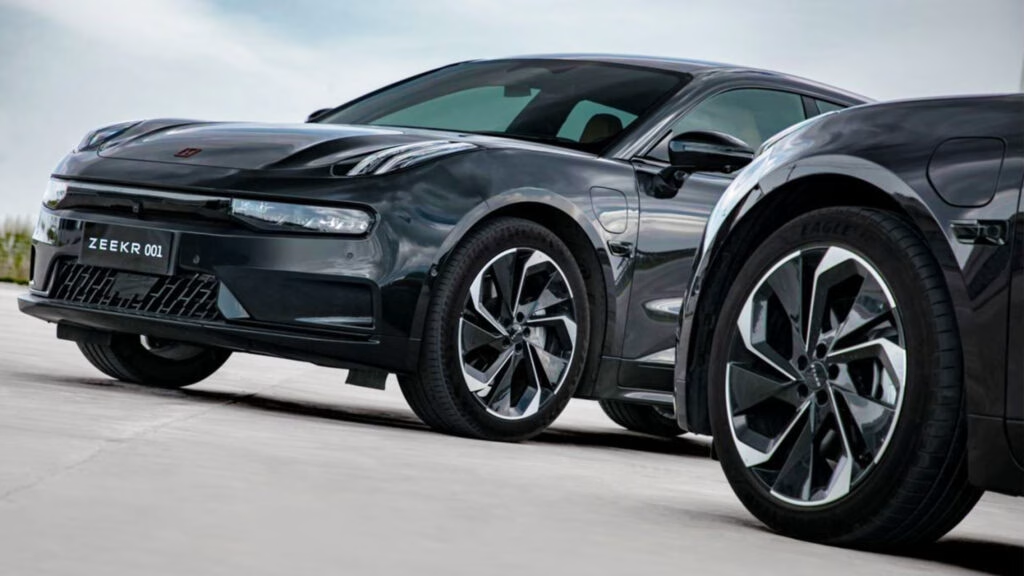Why Are Armored Electric Cars Gaining Traction in Brazil?
If you’ve ever wondered why armored vehicles are so common in Brazil, the answer is both simple and sobering: safety. Brazil leads the world in civilian ownership of bulletproof cars, a direct response to high rates of carjackings and urban crime. For many families and businesspeople, driving an armored vehicle isn’t a luxury—it’s a necessity. Even mainstream automakers like Toyota now offer factory-armored versions of the Corolla and Hilux, a testament to just how normalized this demand has become.
But here’s where things get interesting. As electric vehicles (EVs) become more popular globally, Brazil’s unique security needs are shaping the local EV market in unexpected ways. Enter the Zeekr 001, a Chinese electric estate car that’s now making headlines—not just for its performance, but for its bulletproofing.
What Makes the Zeekr 001 Stand Out in the EV Market?
Zeekr might be a new name to some, but it’s quickly become one of China’s most talked-about EV brands. The 001, their flagship model, is a sleek, luxurious estate that’s been updated for 2024 with more range and features. Under the hood (well, under the floor), you’ll find an 800-volt architecture and a choice of two battery packs: a 95 kWh LFP battery or a larger 100 kWh NMC pack. The base model puts out a respectable 416 horsepower to the rear wheels, while the all-wheel-drive version adds a 362 hp motor up front. And if you’re after pure speed, the 001 FR variant delivers a staggering 1,248 hp and 944 lb-ft of torque—enough to rocket from 0 to 62 mph in just over two seconds.
But in Brazil, it’s not the horsepower that’s turning heads. It’s the armor. The first armored Zeekr 001 was recently spotted on Brazilian streets, looking almost indistinguishable from its standard sibling. The difference? Reinforced panels, thick bulletproof glass, and a strengthened panoramic roof—all designed to keep occupants safe without sacrificing the car’s futuristic style.
How Does Armoring Affect Electric Vehicles Like the Zeekr 001?
Adding armor to any vehicle is a technical challenge, but EVs raise the stakes. Weight is the enemy of range, and bulletproofing can add hundreds of kilograms to a car’s curb weight. That means engineers have to get creative to maintain performance and efficiency. In the case of the Zeekr 001, the robust battery options and high-output motors help offset the extra mass. While official range figures for the armored version aren’t available, the standard 001 can travel up to 641 kilometers (about 398 miles) on a single charge, according to Zeekr’s latest data.
There’s also the question of protecting the battery itself. Most modern EVs have their battery packs mounted under the floor—a vulnerable spot in the event of an attack. While we don’t have photos of the armored Zeekr’s undertray, it’s a safe bet that additional shielding has been added to safeguard the battery from blasts or gunfire. After all, what good is bulletproof glass if the car’s power source isn’t equally protected?
Who’s Buying Armored EVs, and Why?
The typical armored car buyer in Brazil isn’t necessarily a celebrity or politician. Many are business owners, doctors, or families living in urban centers where the risk of carjacking is a daily concern. For these buyers, an electric armored car like the Zeekr 001 offers a compelling mix of security, sustainability, and status.
There’s also a growing awareness of the environmental impact of traditional armored vehicles, which are often based on large, gas-guzzling SUVs. By switching to EVs, buyers can reduce their carbon footprint without compromising on safety. It’s a small but meaningful step toward greener cities—one armored car at a time.
Are There Trade-Offs to Armoring an Electric Car?
Absolutely. Beyond the added weight and potential range reduction, armoring can affect ride quality, braking, and even tire wear. Manufacturers and aftermarket specialists have to recalibrate suspension systems and sometimes upgrade brakes to handle the extra mass. There’s also the cost factor: armoring a vehicle can add tens of thousands of dollars to the price tag, and the process can take weeks or even months.
Yet, for many in Brazil, these trade-offs are worth it. The peace of mind that comes from knowing you and your loved ones are protected is hard to put a price on. And as EV technology improves, the gap between armored and non-armored models will likely shrink, making these vehicles more accessible to a broader audience.
What Does the Future Hold for Armored EVs in Brazil and Beyond?
The arrival of armored electric cars like the Zeekr 001 signals a new chapter in both automotive security and EV adoption. As more automakers enter the market and battery technology continues to advance, we can expect to see even more innovative solutions—think lighter, stronger materials and smarter integration of security features.
Brazil’s unique blend of urban challenges and environmental consciousness is pushing the industry to adapt in ways that could influence global trends. Other countries with similar security concerns are watching closely, and it’s only a matter of time before armored EVs become a familiar sight in cities around the world.
The big takeaway? Staying safe on the road isn’t about perfection—it’s about smarter adjustments. Start with one change this week, and you’ll likely spot the difference by month’s end.

